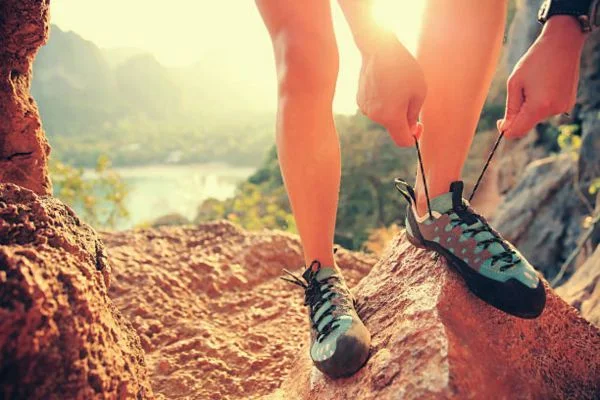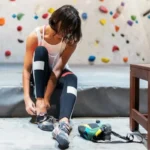If you’re an avid climber, you already know that having the right shoes is essential for success. But you’ve probably asked yourself, “How long do climbing shoes last?” The answer to this question depends on several factors, including how hard and often you climb, the type of shoe you own, and how well you take care of them. So let’s dive into what affects a climbing shoe’s lifespan so you can make sure your shoes are in top condition for every climb.
Type of Shoe
Suppose you plan to invest in quality climbing shoes. In that case, it’s important to note that both flat and downturned models will have different lifespans—the most durable being flat-lasted shoes because they provide less tension on the foot than their downturned counterparts.
If your feet are relatively neutral (i.e., not too broad or narrow), then flat-lasted shoes are best for extended use since they stretch out less over time than downturned models.
Fequency of Use
It should be no surprise that the frequency you use your climbing shoes will impact their lifespan. So it stands to reason that if your hands and feet are in constant contact with holds during a session, a certain amount of wear and tear will occur regardless of shoe type or condition.
If you use your shoes more than three days per week (especially if worn down from extensive use), consider investing in an additional pair to rotate between sessions so each pair can rest accordingly. Doing so will extend the life of each pair by limiting wear and tear on individual pairs.
Care and Maintenance
No matter what kind of shoe or how often it is used, proper care is essential for extending its life span! After every use (but especially after a sweaty gym session!), remove all dirt with a brush before drying them entirely at room temperature—never dry them with direct heat from a hairdryer or radiator!
Additionally, leather climbers need occasional conditioning with special sprays or creams explicitly designed for leather footwear; otherwise, they can become stiff and brittle over time due to a lack of moisture retention. Lastly, always remember to store them away from direct sunlight whenever possible!
Good to read: How To Clean Climbing Shoes?
The Material
Most climbing shoes are made from either leather or synthetic materials. Leather is the most durable option and can last anywhere from 6 months to 2 years, depending on how often you use them and how well you take care of them. On the other hand, synthetic materials tend to wear out more quickly—usually lasting 3-6 months with regular use.
The Fit
Another factor that will affect the lifespan of your climbing shoes is the fit. If your shoes are too tight or loose, they won’t provide enough support for your feet as you climb, which will cause them to wear out much faster than if they fit correctly. Make sure to try on several pairs before purchasing so that you can find ones that fit comfortably without being too tight or too loose.
Related blog: How Should Climbing Shoes Fit?
Signs It’s Time To Replace Your Climbing Shoes

Several telltale signs indicate when it’s time to replace your climbing shoes. Here are some things to keep in mind as you assess your current pair of shoes:
1. Look at the sole – If the rubber sole has worn down or is overly thin, it’s time for a new pair of shoes. As rubber ages, it becomes less sticky and unable to provide the grip needed for successful climbing endeavors.
2. Examine the heel – The heel should be snug but comfortable; if there is excessive stretching or breakdown around the heel cup, then this indicates it’s time for a new pair of shoes.
3. Check for tears or rips – Any visible damage on the outside of your shoe can compromise its ability to perform under challenging climbs, so if there are any tears or rips present, then it’s time to invest in a new pair of shoes!
4. Evaluate fit – If your feet have changed shape over time (which happens!), you may need to purchase different-sized shoes than what you currently own to get a secure fit that provides necessary support while still allowing freedom of movement during climbs.
5. Consider frequency – If you find yourself often climbing (more than once per week), then investing in multiple pairs that can be alternated between each climb can help extend their lifespan significantly by giving them “rest days” between uses!
Also Read: How Long Do Climbing Harnesses Last?
Conclusion
The lifespan of any piece of gear is constantly in flux depending on its usage and maintenance, but some aspects remain consistent no matter what kind of climber you are—your climbing shoes included! Investing in quality flat-lasted models is essential if longevity matters most to you.
However, regardless of the chosen model, frequently rotating between pairs when possible and regular cleaning/conditioning after each use will ensure optimal performance across all types for longer-lasting results! With proper care and maintenance, even beginner-level hiking boots can last up to five years or longer! Happy climbing!



